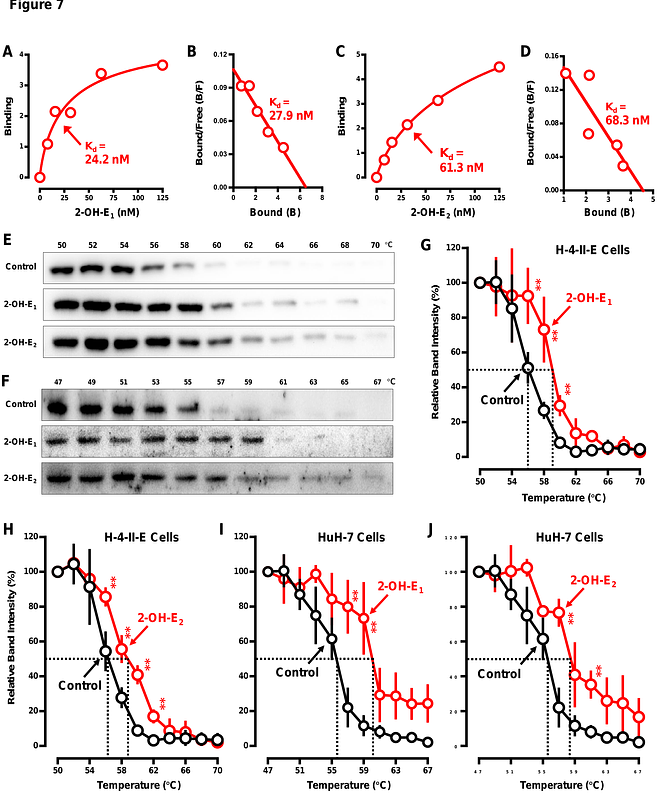Protective Effect of 2-Hydroxyestrone and2-Hydroxyestradiol Against Chemically-Induced Hepatotoxicity In Vitro and In Vivo

Protective Effect of 2-Hydroxyestrone and2-Hydroxyestradiol Against Chemically-Induced Hepatotoxicity In Vitro and In Vivo
Sun, X.; Hao, X.; Jia, Y.; Zhang, Q.; Yang, Y. X.; Zhu, B. T.
AbstractFerroptosis is a form of regulated cell death closely associated with glutathione depletion and accumulation of reactive lipid peroxides. In the present study, we seek to determine whether 2-hydroxyestrone (2-OH-E1) and 2-hydroxyestradiol (2-OH-E2), two major metabolites of endogenous estrone and 17{beta}-estradiol formed in liver by cytochrome P450 enzymes, can strongly protect against erastin- and RSL3-induced ferroptosis in hepatoma cells (H-4-II-E and HuH-7) in vitro and acetaminophen-induced mouse liver injury in vivo. We find that 2-OH-E1 and 2-OH-E2 can protect, in a dose-dependent manner, H-4-II-E hepatoma cells against erastin/RSL3-induced ferroptosis. Similar protective effect of 2-OH-E1 and 2-OH-E2 against RSL3-induced ferroptosis is also observed in HuH-7 hepatoma cells. These two estrogen metabolites strongly reduce the levels of erastin- and/or RSL3-induced accumulation of cellular NO, ROS and lipid-ROS. Mechanistically, 2-OH-E1 and 2-OH-E2 protect cells against chemically-induced ferroptosis mainly by binding to cellular protein disulfide isomerase (PDI), and then inhibit its catalytic activity and reduce PDI-catalyzed formation of iNOS dimer, thereby abrogating cellular NO, ROS and lipid-ROS accumulation. Animal studies show that 2-OH-E1 and 2-OH-E2 can also exert a strong protection against acetaminophen-induced liver injury in mice. Interestingly, while estrone and 17{beta}-estradiol display a very weak protective effect in cultured hepatoma cells, they exert a similarly-strong protective effect as 2-OH-E1 and 2-OH-E2 in vivo, suggesting that the metabolic conversion of estrone and 17{beta}-estradiol to 2-OH-E1 and 2-OH-E2 contributes importantly to their hepatoprotective effect. The results of this study reveal that 2-OH-E1 and 2-OH-E2 are important endogenous factors for protection against chemically-induced liver injury in vivo.


